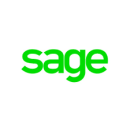
In an office environment, leaders can read body language to see how an employee responds to constructive feedback.
Eye contact avoidance, arms crossed and slumped shoulders often indicate that whatever is being conveyed is not being received well.
Identifying these cues has gotten increasingly difficult in an all-remote work setting, forcing many leaders to adapt their feedback approaches.
Sage Intacct’s Director of Product Enablement Chris Carter said he started scheduling important conversations over video conferencing, paying close attention to when it’s slated.
“If I anticipate that the conversation might be upsetting, I pay extra attention to the timing, like avoiding conversations at the end of the day or week, and I am careful to monitor their reaction,” Carter added.
Meanwhile, to make up for the absence of casual, in-person run-ins, Michelle Arieta, the chief people officer at Domino Data Lab, said they introduced a series of practices that include Slack check-ins and overlapped team schedules.
“We’ve also been working with managers on the importance of structured one-on-ones to include project updates, feedback and overall wellness check-ins,” Arieta said.
Arieta and Carter, plus leaders from four other companies, shared how else they are adjusting feedback loops while working remote.
Chris Carter, director of product enablement at the enterprise resource planning platform Sage Intacct, stressed how important it is to establish a feedback cadence specific to each person. A parent working remote, for instance, will likely require different times to connect than someone without children.
What’s different about your approach to giving feedback remotely versus in person, and why?
Remote feedback is definitely more difficult than in person due to the lack of “bandwidth” in the communication. When you are in person, it’s much easier to read body language and see the more subtle but meaningful behaviors and reactions as you have a conversation. Providing feedback via Zoom or Teams requires you to pay much closer attention to cues on how you are being received. This absolutely requires video to be turned on. If I anticipate that the conversation might be upsetting, I pay extra attention to the timing, like avoiding conversations at the end of the day or week, and I am careful to monitor their reaction. Follow-up is important in these situations, as it can be easy for individuals to withdraw if you don’t ensure there is closure for them. Schedule a follow-up before or during the conversation.
How do you work with remote employees to determine the best cadence and medium for providing feedback to them specifically?
I have a team meeting every other week and one-on-one meetings with everyone on my team weekly. We’re typically touching base multiple times a day. I try to provide feedback in real time, or as close to it as possible. This often comes in the form of a chat message to introduce the subject. Then, if needed, we discuss it in more detail during our next one-on-one. I’ve found that I have a slightly different cadence and approach for each of the people on my team, which takes time to figure out. Once you do, it is more sustainable than a one-size-fits-all approach. I have a team member that has small children, so we work our meetings around school, activities and other distractions she has. She’s amazingly productive, and it’s become easy for us as we both have clear expectations on when we meet.
How do you maintain transparency and communication with your remote team and how does that support your ability to provide great feedback?
Working remotely has a great deal of benefits, but the loss of the regularly scheduled and impromptu interactions with in-office coworkers is the biggest challenge. To compensate, I use as many interaction pathways as I have at my disposal. We use video in almost all our calls as well as chat, email and text messages. Additionally, if an interaction or question will require more than a simple “yes” or “no,” the team is encouraged to get on a video call. Whenever there is an especially important topic, I’ll call a quick team meeting and record it for anyone who couldn’t make it. I also work to ensure that my team sees me as approachable and that they are comfortable reaching out to me at any time.
The key behind Emily Lerner Amico’s approach to feedback is in ensuring her team knows she cares about their needs. “When my team knows that I truly care, they are more open to feedback, and it’s a really productive conversation,” said Lerner Amico, who oversees the people department for the drone delivery service Wing.
What’s different about your approach to giving feedback remotely versus in person, and why?
I believe in giving clear and direct feedback, whether it’s in person or remote. That feedback is always going to be more well received if the person knows that you care about them. It takes effort to build that foundation, and it’s even harder to do well while remote. I’ve focused a lot on building an even stronger foundation with my team during this time. For me, that means letting my team know that I understand what they want for themselves and that I want it for them too.
How do you work with remote employees to determine the best cadence and medium for providing feedback to them specifically?
You have to do it on a case-by-case basis. As I’ve progressed in my career, I’ve come to appreciate feedback because someone is taking time out of their day and headspace to help me. But everybody is unique in the cadence and medium of the feedback they need. As a manager, I’m most successful when I deliver it in a way that resonates with each person. Making sure you’re in tune with each person is not easy, but it’s so important. For example, there’s someone on my team who is historically afraid of feedback. With this individual, I don’t store feedback. I’ll give it when it happens, even over chat or through an impromptu call, which I wouldn’t do otherwise.
How do you maintain transparency and communication with your remote team and how does that support your ability to provide great feedback?
If you think about what’s missing right now, it’s the “chatty time.” Conversations in the hallway or before meetings can seem innocuous, but they’re important. I’ve been trying to recreate those moments with my team; for example, by making an effort to have “social chatty time” at the beginning of our team call. These small changes create a team culture where everyone cares more deeply about each other, and this is something that has sustained our team dynamic during remote work.
Studies have shown that employees are more likely to offer feedback if they ask for feedback, Domino Data Lab’s Chief People Officer Michelle Arieta said. As such, Arieta said they encourage employees to regularly ask and receive feedback during one-on-ones, team retrospectives and individual conversations.
What’s different about your approach to giving feedback remotely versus in person, and why?
Knowing that remote employees miss out on ad hoc interactions and verbal and visual cues at meetings, we are more intentional about the frequency and type of feedback we give. We build in various feedback loops including one-on-ones, scheduled Slack check-ins and overlap team schedules so managers and team members can provide real-time or scheduled feedback. We’ve also been working with managers on the importance of structured one-on-ones to include project updates, feedback and overall wellness check-ins.
How do you work with remote employees to determine the best cadence and medium for providing feedback to them specifically?
Research shows that the best feedback is in real time and focused on development, so we believe the ideal cadence to give feedback is whenever there is an opportunity. We build in periodic check-ins knowing that there isn’t always the opportunity to provide immediate feedback. Managers hold biweekly one-on-ones and use part of that time to provide feedback. We also have biannual performance reviews. We believe that providing feedback frequently will allow us to streamline our review process to avoid lengthy and outdated narratives that risk recency bias.
In the coming months, we’ll be working with our managers on how to flex their techniques based on individual needs and situations, especially remote team members. At times, managers may need to be more involved, providing targeted, immediate feedback, while other times they can act more like a coach. A junior team member that is new and working remotely will need more feedback than a seasoned team member that has built in-person relationships with multiple feedback points.
How do you maintain transparency and communication with your remote team and how does that support your ability to provide great feedback?
We strive to have clear team goals, priorities, roles and responsibilities so team members have the independence to make decisions within their charter. More frequent communication is needed when the team strategy is pivoting, so we adjust the communication cadence based on the context. There’s an assumption that constant communication is most effective, but studies show that bursts of rapid communication followed by longer periods of silence are signs of a productive team. Teams often schedule overlap time, so that the bursts can happen, but each team is different.
We encourage teams to set clear expectations to avoid issues. We’re also shifting the mindset that work can happen asynchronously. Some teams have handover channels where team members provide context for important decisions or key activities. “Win Together” is a core value, and it is everyone’s responsibility to ensure transparency and communication to every team member. Teams develop systems that work for them, and we are constantly seeking input on how we can iterate toward excellence.
With five offices across the U.S. and U.K., Sovrn had a strong remote culture coming into the all-remote-work environment brought on by the COVID-19 pandemic, according to Theon Chu. The software engineering manager at the publishing technology platform said that he focuses on ensuring deep understandings across his team to avoid missteps and jumping to conclusions.
What’s different about your approach to giving feedback remotely versus in person, and why?
With remote teams, it’s crucial to communicate clear and measurable expectations while maintaining strong channels of communication. This means being present and aware in discussions across the various communication tools, which for us means Slack, Google Meet and Jira. This helps to build an awareness of the contributions of each of my team members. In a virtual setting, it’s also important to dive deep to understand issues and concerns and not jump to conclusions.
With the lack of body and visual cues, virtual communication is prone to more misunderstandings. Because of this, I always emphasize that the purpose of feedback is to be constructive and forward-looking before diving into such discussions. Lastly, with a remote team, it’s critical to support channels for feedback. Ours include a dedicated Slack channel for employee recognition, regular eNPS surveys, peer reviews and dedicated time at the end of all-hands meetings for employee shout-outs and appreciation.
How do you work with remote employees to determine the best cadence and medium for providing feedback to them specifically?
I meet with my direct reports for one-on-ones on a weekly basis. I find that they're the best time to discuss and provide feedback. This also usually gives me a few days when I can dig into and understand the context of issues before discussing them with the team member. I also customized growth and coaching plans for each of my team members based on their career goals, interests and areas they want to grow. We have in-depth discussions on their opportunities for growth and follow up throughout the week with positive or constructive feedback.
How do you maintain transparency and communication with your remote team and how does that support your ability to provide great feedback?
We have developed strong processes to support our remote work setting. This includes having daily morning standups when we coordinate work or issues that come up. We also have monthly demo sessions for team members to present their work to the team and stakeholders. These help us maintain communication and connection across the team without a physical office.
With a remote setting, it’s important to have consistent, clear and open messaging. This means being candid in communication and providing context as much as possible. One-on-ones are a great time for me to check in with team members and use the time to connect with each of them on a personal level. This helps to build a level of trust and rapport that provides a safe space for constructive feedback.
Simone de Leuw-Fastner, who leads operations at the relocation platform Relocity, said her approach to giving feedback remotely isn’t too far off from how she delivers it in an office environment. With or without an office, she said securing face time with an employee to deliver feedback is her top priority.
What’s different about your approach to giving feedback remotely versus in person, and why?
I never provide constructive feedback over the phone in the office or in a remote setting and use video calls to get face time, since I can’t do it in person. I also dedicate the same amount of time to each of my team members, whether they are high or low performers, so no one feels overlooked. As a company, we regularly shout out our best-performing team members in several categories. That way, we can draw everyone's attention to the excellent work performed by other team members, giving everyone a chance to learn and improve. I also ask for their feedback and how we can improve on certain workflows. Besides our regularly scheduled check-ins, I often reach out via text message or Slack in order to maintain a personal connection and ask how they are doing as a substitute for run-ins at the office.
How do you work with remote employees to determine the best cadence and medium for providing feedback to them specifically?
It is important to have an open-door policy and that my team knows they can reach me 24/7 if they need extra support. We usually have a weekly team meeting to discuss general business updates, goal progress and to have an open discussion about challenges and questions that the team encountered in the previous week. We also use this team meeting to share best practices. I also hold weekly one-on-ones with each member of my team to discuss anything they didn’t want to introduce in front of the whole team and discuss their monthly goals in a more intimate setting. I find it’s most important to host these conversations over a video call to get face time with one another.
How do you maintain transparency and communication with your remote team and how does that support your ability to provide great feedback?
In order to effectively manage a team, it's important to pick up on the nuances of my team's behavior, interactions with other team members, stress levels and well-being. I try to be mindful of their lives and how it might affect my team's performance. I maintain transparency and communication via weekly video team meetings and one-on-ones. If there are important updates and changes, I reach out to my team immediately to give them an update, instead of waiting until the next meeting — sometimes it's a personal phone call for sensitive issues. If tough decisions have to be made, I always explain the reasoning behind it without giving away sensitive information. Giving my team explanations for certain decisions builds a level of trust, and if your team trusts you, they are more open to feedback and constructive criticism.
Erin Lashbrook, manager of private equity accounts at knowledge search firm AlphaSights, has been working hard throughout the pandemic to ensure feedback continues to flow freely among her team. They may not be able to meet in person right now, but that hasn’t stopped her from keeping communication human and personal.
What’s different about your approach to giving feedback remotely versus in person, and why?
I've had to become more proactive in establishing new channels for my team to provide feedback while we've transitioned to a remote environment. We definitely took the simplicity of being able to provide feedback in real time for granted when we were all seated next to one another. It's no longer possible for one of my associates to turn to me to ask a quick question, celebrate a win or clarify something about a project I'm running with them. So I've had to work proactively to both solicit and provide my team with new remote-friendly ways to maintain our culture of open communication.
How do you work with your remote employees to determine the best cadence and medium for providing feedback to them specifically?
We rely much more on tools like Slack to enable these channels, whether it be screen sharing and using the draw function to provide feedback in real-time as if we were whiteboarding in person, or the shortcut function to set up forms for technical and product-oriented feedback that we used to discuss live with our engineering teams. We've tried to keep our feedback channels as personal and human as possible, using technology on video calls to assist in delivering feedback as if we were catching up in person, rather than as a replacement for face-to-face conversations.
How do you maintain transparency and communication with your remote team and how does that support your ability to provide great feedback.
Having as many face-to-face touchpoints as we can while not meeting for the sake of meeting has been my biggest focus as a manager during this transition. It's easy in a virtual environment to slip into the habit of messaging someone quick feedback rather than calling them to discuss it live, but I've found that taking the extra time to maintain as much face-to-face contact minimizes miscommunication between members of our team as much as possible.
We sync as a team three times per day over video (for about 15 to 30 minutes depending on how much we need to cover), and I meet one on one weekly with each associate that I manage to ensure that we're fostering open communication and not leaving anyone on a virtual island. Being as available as possible to your team is even more important in a remote environment, so I always try to be as accessible as possible for a quick call to simulate how we'd be working together in the office.


















